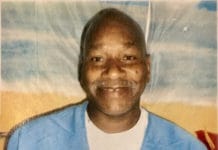by the Prisoner Hunger Strike Solidarity Coalition
PART I
This paper is provided to help California prisoners applying for parole understand the psychological evaluations conducted for the Board of Parole Hearings and to provide advice to them and their supporters on how to counter the psychological evaluation with letters and other materials submitted to the Board.

What is the FAD?
The California Board of Parole Hearings (BPH) has established the Forensic Assessment Division (FAD), a staff of psychologists who conduct psychological evaluations of prisoners for Board hearings.
What does the FAD evaluator do?
Before a prisoner goes to the Board, a psychologist for the FAD conducts an interview with the prisoner and prepares a Comprehensive Risk Assessment, or CRA, for the Board. The psychologist reviews the prisoner’s criminal record, including past crimes, as well as the prisoner’s record in prison, looking for the following types of information:
- Evidence of remorse for the life crime or crimes
- Positive programming like school, rehab programs, job training and job performance in prison
- Positive paperwork, like laudatory chronos, clean time and parole recommendations from staff
- Negative activities, like disciplinary infractions, gang validation or time spent in SHU
- Substance abuse and recovery efforts
- What kind of support the individual has in the community, and
- Plans for post-release housing, job and family life.
How does the Board use the CRA?
The Board relies heavily on the FAD’s report in deciding suitability for parole. The prisoner can have an outside psychologist or psychiatrist write an alternative review, but generally the Board gives more weight to the FAD review.
The key focus in the FAD assessment is risk of future crime and violence. The Board generally will not parole someone with medium to high risk, so the parole applicant and his supporters need to focus their efforts and arguments on why the individual is, in fact, a low risk of future substance abuse, crime and violence.
How does the FAD measure risk?
The FAD psychologist uses two formal risk assessment tools – the Historical Clinical Risk Management 20, Version 3 (called the HCR-20V3 in the FAD’s report) and the Hare Psychopathy Checklist (the PCL-R). The psychologist also makes a diagnosis as to whether the prisoner has a mental disorder, such as Antisocial Personality Disorder or a substance use disorder, under the standards of the Diagnostic and Statistical Manual of Mental Disorders (the DSM-5). The DSM-5 is the manual that mental health professionals refer to when diagnosing mental disorders in the United States.
The HCR-20V3 and the PCL-R both revolve around the concept of Antisocial Personality Disorder. They measure other things and use different ways of measuring risk, but Antisocial Personality Disorder is a central building block in each of them.
The Board’s chief psychologist has admitted these tools aren’t well suited to lifers and long-term prisoners. He stated publicly that a “Medium” risk score for a lifer is more like a “Low” risk score for other prisoners. It may be useful to point this out to the Board in submitted materials.
Any issues we suggest raising or arguing to the Board should be raised in written materials submitted to the Board or through the prisoner’s attorney. Opportunities for the prisoner to raise issues in the hearing are limited, and panels don’t encourage or welcome it.
What are some concerns with these risk measurement tools and concepts?
Antisocial Personality Disorder: The diagnosis of Antisocial Personality Disorder, or ASPD, is important because the FAD psychologist and the Board weigh it as a big risk factor for future criminality. It also plays into both the PCL-R and the HCR-20V3 scores, which magnifies its effect on the overall risk score. Besides the negative effect on parole consideration, diagnosis of ASPD carries a serious stigma for an individual in the community.
The DSM-5 definition of ASPD centers on behavior that shows “a pervasive pattern of disregard for and violation of the rights of others.” The diagnosis requires three or more of the following behaviors or traits:
- Failure to conform to or respect laws or social norms, as indicated by repeatedly performing acts that are grounds for arrest.
- Deceitfulness, as indicated by repeated lying, use of aliases or conning others for personal profit or pleasure (e.g., to obtain money, sex or power).
- Impulsivity or failure to plan ahead, as indicated by decisions made on the spur of the moment without forethought or consideration of the consequences, sudden changes of jobs, residence or relationships.
- Irritability and aggressiveness, as indicated by repeated physical fights or assaults. It doesn’t include aggressive acts to defend oneself or others.
- Reckless disregard for the safety of self or others. It may be seen in recurrent speeding, DUIs or accidents, risky sexual behavior or substance abuse, disregard or neglect of children and so forth.
- Consistent irresponsibility, as indicated by repeated failure to maintain good work behavior or honor financial obligations. It can be seen in long periods of unemployment, frequent quitting of jobs, absences from work, or defaulting on debts, child support and other support obligations.
- Lack of remorse, as indicated by being indifferent to or rationalizing having hurt, mistreated or stolen from another. The person may offer a superficial rationalization for such behavior, somehow minimize the harm that was done or blame the victims. Failure to make amends for the harm may be an indicator.
In addition to having three or more of the above traits, a person must be over the age of 18 to be diagnosed with ASPD, and the behavior must continue into adulthood. One important requirement for a diagnosis of ASPD is that there must be evidence of “conduct disorder” in the person starting before the age of 15 years.
Conduct disorder is a separate DSM-5 diagnosis that involves a “repetitive and persistent pattern” of behavior that violates social norms and rules and/or the basic rights of others. This pattern may take the form of aggression to people or animals, destruction of property, deceitfulness or theft, or serious rule violations.
In preparing a risk assessment, the FAD psychologist will generally look at a prisoner’s early personal history for symptoms of this disorder. If there is nothing in a prisoner’s early history to support a diagnosis of conduct disorder, there should be no diagnosis of ASPD.
The fact that a person has broken the law or is incarcerated doesn’t necessarily mean that person has ASPD. The DSM-5 warns that ASPD must be distinguished from ordinary criminal behavior for personal gain, if that criminal behavior is not accompanied by the other personality traits in the definition of ASPD.
The DSM-5 supports this point by providing a special code (called a “V Code”) for “Adult Antisocial Behavior,” where an individual exhibits certain types of antisocial behavior without the other ASPD personality traits. This is not considered a mental disorder like ASPD but is more often a reflection of the person’s history or socioeconomic status.
As an example of Adult Antisocial Behavior, the DSM-5 cites the “behavior of some professional thieves, racketeers or dealers in illegal substances.” This doesn’t mean the behavior is not relevant to the FAD or to the Board, but it’s not a mental disorder that carries the lasting stigma of ASPD.
Although criminal and rule-breaking behavior is only one aspect of ASPD, many psychologists (particularly FAD psychologists) focus on it. This is a significant problem for prisoners and has been criticized by psychologists who believe it leads to over-diagnosis in the prison setting.
The stereotype that all or most prisoners have ASPD is not supported by the research. According to some sources, when all prisoners are studied to determine the prevalence of ASPD, only 15 to 30 percent actually meet the criteria for it.
When psychiatrists do focus on personality traits other than criminal behavior, another problem arises. These subjective traits are often affected by the biases, background and attitude of the psychologist.
A diagnosis of ASPD is frequently connected with low socioeconomic status and urban settings, and the DSM-5 expresses concern that it may be misapplied where behavior that seems like antisocial behavior is just “part of a protective survival strategy.” For this reason, the DSM-5 advises psychologists to consider the social and economic context in which behavior occurs and provides tools to help psychologists address these cultural and situational factors, including a model outline and model interview questions.
It also provides V Codes to include in the psychological assessment that flag the presence of these social and cultural influences. These may include trauma, abuse or neglect in childhood; disruptive family life and relationships; poverty, homelessness and related factors; military deployment; educational problems; and notably, “imprisonment or other incarceration.”
There’s little evidence that FAD psychiatrists use these tools and V Codes, or consider social context at all, so it’s important for the prisoner and his family to address these points if they are relevant. Written materials can address family and community environment, limited educational and career opportunities, cultural expectations and other factors that may have affected the prisoner’s behavior, habits and beliefs.
One of the biggest problems with the ASPD diagnosis, particularly for long-term prisoners, is the idea that this personality type is fixed for life and not amenable to change. In diagnosing ASPD, the FAD psychologists tend to focus on an individual’s early life to meet the definition and then overlook change that may occur in later years.
This ignores the fact that a diagnosis of ASPD under the DSM-5 requires an “enduring pattern” of antisocial traits that are “persistent” and “stable over time.” It’s hard to understand how these requirements can be met if the individual has not exhibited those traits for a very long period of time.
Any evaluation for ASPD should consider whether these factors are present at the time of the evaluation. The idea that ASPD is a lifelong disorder is being challenged by many studies and research in criminology and psychology. The truth is that people who once evidenced antisocial traits change with age, time and positive influences.
Age is a very important consideration, and the DSM-5 recognizes it as a factor in the diagnosis. It describes ASPD as having a “chronic course,” but states that it tends to become less evident or go into remission when individuals grow older, particularly after the age of 40.
While this is especially true for criminal behavior, it applies to the full spectrum of antisocial behaviors as well as substance abuse. Age has long been recognized as one of the most important factors in rehabilitation and behavioral change.
Although there is some recent debate in criminology about the impact of age, it is countered by a great deal of research in forensic psychology showing that age is consistently the most meaningful factor in judging criminal or violence potential. FAD psychologists should be applying these considerations before diagnosing a prisoner with ASPD. When they don’t, it’s up to the prisoner and his supporters to clearly show changes in behavior and attitude that occur with age and time.
There are many things that do not indicate ASPD. Conduct that occurs only in connection with bipolar or schizophrenic episodes is not ASPD. Conduct that occurs only in connection with substance use does not meet the ASPD definition.
In addition, the traits listed in the definition indicate ASPD only when they are “inflexible, maladaptive and persistent and cause significant functional impairment or subjective distress.” Traits are not maladaptive unless they lead to distress, dissatisfaction and failure and to the most significant defining feature of personality disorders – interpersonal difficulties.
How a person relates to others is a key factor of the ASPD diagnosis. A person with ASPD is rarely able to enjoy sustained, meaningful and rewarding relationships with others. This is where a prisoner’s family and friends can provide particularly helpful information.
While authorities generally say ASPD is hard to treat, studies have concluded that a form of therapy called Cognitive Behavioral Therapy is the most effective with ASPD. If the prisoner has been through CDCR’s Step Down Program, “Thinking for Change” or other programs identified in §3040.1 of Title 15, it should be raised as a positive point, because these programs are based on the model of Cognitive Behavioral Therapy.
Substance use disorders: These are other mental disorders that often appear in the CRA prepared for Board hearings. In the DSM-5, they are diagnosed according to the specific substance used (such as “Alcohol Use Disorder” or “Opioid Use Disorder”). Psychological studies show that substance use disorders frequently appear together with Antisocial Personality Disorder. This only states what a lot of people know – that drug and alcohol misuse is often strongly associated with criminal or antisocial behavior.
Each type of use disorder has a list of criteria that measure dependence and impairment, and the psychologist is supposed to rate these over a 12-month period to determine 1) if the person can be diagnosed with the disorder at all, and 2) if so, how “severe” the disorder is.
For example, if a person does not meet at least two of the criteria for Alcohol Use Disorder, the diagnosis doesn’t apply. If it does apply, then the psychologist needs to rate the severity. If someone meets two to three criteria over the 12-month period, it’s rated a mild disorder; four to five criteria indicate a moderate disorder, and six or more indicate a severe disorder.
In addition, the DSM-5 provides “specifiers” that can indicate whether the use disorder is in remission. If someone has not met the criteria for the use disorder for three to 12 months, the psychologist can specify that it’s in “early remission,” and if the criteria are not met for over 12 months, the psychologist can specify that it’s in “sustained remission.” A person can be considered in remission even if he still has cravings for the substance.
The measures of severity and remission could provide very important information to the Board, but we have not seen any evidence that the FAD psychologists use either one of them in their risk assessments. Instead, they tend to treat the use disorders as diagnoses that never change over time.
This is unfair to those who have overcome the problem, either through treatment programs or on their own. The prisoner should specifically ask the psychologist to address these categories.
Some FAD psychologists mention another specifier, “in a controlled environment.” This can be negative, implying that the prisoner might not do so well outside a controlled environment.
Some FAD psychologists, however, have stated that this specifier doesn’t apply because drugs are readily available in the prison environment. This is a point the parole applicant should make in the interview with the psychologist and in materials submitted to the parole panel.
PART II

What are some concerns with the Board’s risk measurement tools? (continued)
FAD psychologists use two formal risk assessment tools – the Historical Clinical Risk Management 20, Version 3 (called the HCR-20V3 in the FAD’s report) and the Hare Psychopathy Checklist (the PCL-R).
The PCL-R: The PCL-R predictive tool looks at a set of 20 character traits to assess antisocial or psychopathic tendencies, which are viewed as risk factors for future offending and violence. About half of the checklist traits (Factor 1 traits) focus on psychological states that are supposed to indicate “psychopathic” tendencies. These include things like “superficial charm,” “grandiose sense of self-worth,” callousness or lack of empathy, “shallow affect” and pathological lying.
The rest of the checklist traits (Factor 2 traits) focus more on behavior that is closely associated with Antisocial Personality Disorder under the DSM-5. These refer more to an antisocial lifestyle with frequent criminal behavior and early delinquency, with items like “parasitic lifestyle,” poor behavioral controls, promiscuous behavior, lack of realistic goals, impulsivity, irresponsibility and poor relationships.
Although the PCL-R is one of the most widely used predictive tools, there are many problems with it. Many recent research studies have raised serious issues with the Factor 1 traits especially. They are viewed as too subjective, leading to big differences in how different psychologists score them. The background and biases of the psychologist can easily affect the results.
And the Factor 1 traits are not good predictors, either – recent studies show they are no better than chance at predicting violent criminal behavior. As for the Factor 2 traits, many authorities don’t see any real difference between them and factors for antisocial personality disorder under the DSM-5. Overall, the PCL-R performs much worse than other commonly used predictive tools.
The developers of the HCR-20V3 – the other tool used by the FAD – have stated there’s no need to use the PCL-R test in addition to the HCR-20V3, because they both measure the same thing and the PCL-R gets the same or less reliable results. Like many predictive tools, the PCL-R is subject to racial and cultural bias – these tools become less reliable the more the subject differs from the population that was used to develop the tool.
Many of these tools were developed using white male populations. Finally, because the PCL-R relies on many of the same factors as Antisocial Personality Disorder, it carries the same problems for long-term and life prisoners – that is, a failure to recognize personality and behavioral change over time.
HCR-20V3: Like the PCL-R, the HCR-20V3 measures 20 factors to determine the risk of violence in the future. The factors are divided into three areas: Historical (10 factors), Clinical (5 factors) and Risk Management (5 factors). In a CRA, references to “H” numbers, “C” numbers and “R” numbers refer to these three different areas. These different areas look at issues in the past, issues in the present, and potential issues in the future.
- Historical: The HCR-20V3 is weighted heavily on the side of historical factors, which include things like past violence and behavioral problems, problems with relationships, employment, substance abuse, negative childhood experiences, violent attitudes and problems with compliance. Past violence and other behavioral problems are separated by age – under 12, between 12 and 17, and over 18 – but none of the factors account for changes that occur between a person’s 20s and his 40s, 50s, 60s or beyond. This part of the test can’t reflect the kind of major changes in behavior, attitude and accomplishment that occur in many prisoners during their time in prison.
- Clinical: This part of the HCR-20V3 is supposed to measure the prisoner’s present state of mind and dynamic factors that can change over time. However, it doesn’t measure changes in the historical behavior identified above and can’t outweigh those historical factors. So it doesn’t really work well for lifers and long-term prisoners. One very important aspect of this section concerns “Problems with Insight.” Insight is very important to the Board, and the HCR-20V3 focuses on specific insights: insight into mental disorder, insight into violent tendencies and risk factors that may trigger violence; and insight into the need for treatment. Unfortunately, many prisoners are improperly diagnosed with ASPD, and the FAD may expect them to show insight into that and into the need for treatment for it. The insight into past violent acts and the risk factors that might trigger such acts is extremely important and should be a focus for the prisoner.
The Clinical section also looks at violent attitudes and thoughts, instability, and problems with compliance or responsiveness to treatment or correction. It looks for “current symptoms” of major mental illness; but unfortunately the FAD psychologists do not seem to assess whether the prisoner shows current signs of Antisocial Personality Disorder, the FAD’s most common diagnosis. It’s still rooted mostly in past behavior.
- Risk Management: The Risk Management section of the HCR-20V3 looks into the future and tries to predict, based on Historical and Clinical factors, what the risk is of re-offending or getting involved in crimes or violence after release. The primary focus of this section is on the prisoner’s plans and whether those plans will work to manage the risk of re-offending. The specific areas addressed in this section are plans for (1) professional services, (2) living situation, (3) personal support, (4) potential problems with compliance, and (5) potential problems with stress and coping.
What can the parole applicant and his supporters do to counter a high risk score?
If the FAD’s risk assessment concludes there is antisocial personality or a high risk for future violent crime, then the prisoner and his supporters must debunk the notion that the individual has an antisocial personality or any of the other traits and behavior indicated by the FAD’s risk assessment.
The way to push back against an unfair risk assessment is through letters from family, friends, clergy, past teachers and other supporters in the community, memos or materials submitted by the applicant personally and, if possible, outside psychological assessments. In materials from supporters and the prisoner, it is usually better not to mention antisocial personality disorder, the FAD’s formal predictive tools, or any other technical psychological terms. Rather, supporters should simply talk about the traits in the individual prisoner that are clearly the opposite of those described in these psychological definitions and concepts.
For example, to show that a prisoner is sensitive, empathic, concerned about the plight of others, supporters should talk about what they know about and have seen the prisoner do, like help younger individuals in the family or community stay away from drugs, crime and prison. Supporters might tell about what they have seen the individual do to be a great father or mother. They should remember to stick with their own experience and the behavior and actions they have seen or know about showing the prisoner does not have the characteristics of a person with ASPD and is not a high risk for re-offending. Here are some things to focus on in materials submitted to the Board, including the prisoner’s documents and letters from outside supporters:
Personality traits: Materials and letters should provide evidence and examples of:
- Actions and attitudes that show concern for others over one’s own personal interests
- Remorse for past crimes and harmful actions
- Healthy, stable relationships without exploitation, coercion or intimidation
- Honesty, sincerity, responsibility
- Caring and empathy
- The ability to deal with anger and control impulsive behavior
- The ability to think ahead and consider the consequences of actions
- The ability to comply with rules and expectations
- Responsiveness to treatment or correction.
Materials could also describe behavior before the age of 15 demonstrating respect for rules and the rights of others to counter the idea of “conduct disorder.” Look at the criteria for ASPD (in Part I above) carefully and think about how to demonstrate that these characteristics don’t fit the prisoner. During the interview with the FAD psychologist, the prisoner should try to be sincere and honest in answering questions, not try to charm or play the psych, and show that he can keep his cool even when the psych is saying or asking things that bother or embarrass him. He should mention any kind of cognitive behavioral therapy he has had, such as the Step Down program, “Thinking for Change” program or others. He should talk about how his thinking has changed.
Insight: Insight into violent tendencies and the risk factors that trigger them is one of the most important areas to focus on in preparing for a parole hearing. The prisoner should do everything possible to show understanding of past criminal or violent actions, the causes of that behavior, how to avoid those causes, and why they are no longer an issue. Any therapeutic programming, such as anger management or cognitive therapy programs, should be pointed out.
If substance abuse was a problem in the past, it is especially important to show the Board what recovery programs the prisoner has done and how he or she plans to support sobriety in the community. He should ask the psychologist to provide a severity rating and address the “in remission” specifier, pointing out the absence of drug-related write-ups even though drugs are readily available in prison. The prisoner should think about possible triggers for drug use and how he has and will address them. The Board generally will want the prisoner to include specifically how he will remain sober once released from prison, such as attending Alcoholics Anonymous or NA to address this risk.
The FAD psychologist will also look for insight into a “mental disorder” and the need for treatment. In most cases, this will mean ASPD and possibly a substance use disorder. Even if the prisoner doesn’t really meet the criteria for ASPD now, it may be useful to acknowledge problems in the past, and then repeatedly emphasize the changes in behavior and attitude over time, and the difference in who the prisoner is now and who he was when he came into prison.
Behavior: Since all of the FAD’s tools and approaches over-emphasize past history, it’s up to the prisoner and his supporters to fill in the blanks for the Board. Without trying to comment on criticisms or debates about these tools, they should make sure the materials submitted to the Board emphasize the things that have changed since the prisoner came to prison, how he accomplished that change, and how long it’s been since the negative acts that led to a prison term. He should list accomplishments and activities that demonstrate his stability and his compliance with rules and expectations.
It is also important to address the impact of age, and the steps the prisoner has taken to reinforce the natural tendency for substance abuse, crime and violence to subside with age. It is also important for supporters to show how the individual has changed over time to become much more “pro-social,” responsible, loving, empathic, motivated to succeed, etc., and to explain why they are convinced the individual is not a risk for future substance abuse, crime or violence.
Plans. The parole applicant should do as much thinking and planning for release as he can before he meets with the psychologist, and make sure the psychologist understands and knows the plans he has in place. These are the same kinds of things he should have ready to present to the parole panel in his hearing. Be sure to address the following:
- Professional services: substance abuse counseling or prevention services, medical or pharmaceutical services for conditions like ADHD or bipolar disorder, plans for ongoing medical care for chronic health conditions, etc.
- The living situation: where the prisoner will live, how long he can live there, how he will support himself, a realistic budget, etc.
- Personal support: The prisoner’s support network; letters from family and others with details about how they can support him.
- Potential problems with compliance: How will the prisoner ensure compliance with parole requirements, treatment, job expectations, medications and so forth?
- Potential problems with stress and coping: How will the prisoner cope with stress and difficult situations? Does he have a spiritual practice or other means of stress-reduction, anger management techniques, support groups, family and friends?
Summary
In summary, friends and family of a prisoner going to the Board need to offer reality-based support for the notion that the prisoner has done as much as he could, under the circumstances of his imprisonment, to reform himself. Based on facts that the Board would not otherwise know or be in a position to consider, supporters need to show that, contrary to the culturally insensitive and factually mistaken assumptions of the FAD’s risk assessment, the prisoner is not at all likely to return to illicit substances, to crime and to violence.
PART III

How to address some special issues for Ashker class members
For prisoners who spent a long time in SHU under the CDCR’s gang lock-up and debriefing policies, there are three special issues that may come up in psychological interviews and Board hearings:
- Time in SHU
- Refusal to debrief
- Participation in hunger strikes
Time in SHU. An individual in SHU, besides losing “good time,” is largely unable to participate in pro-social programs. In addition, SHU time traditionally meant that a prisoner engaged in bad behavior to get there. All these are negative factors to the Parole Board and to its psychologists.
To counter this, the prisoner should make clear he was not in SHU for disciplinary reasons, and that it was legally wrong for CDCR to keep prisoners in SHU for so long. By signing the settlement agreement in Ashker v. Brown, the CDCR basically conceded that it was improper to keep prisoners in SHU solely based on alleged gang affiliation or membership.
It is also implicit in the settlement that due process was violated, and the six-year reviews were not fair. If an individual was in SHU for a long time and not able to take part in constructive programs because of CDCR’s discredited policies, it is unfair for the Board to hold it against the prisoner.
The way to approach this is to show, in an alternative psych report and in letters from family friends and professionals who advocate for the individual’s parole, that the prisoner did the very best he could at improving himself while consigned to the extremely harsh conditions of isolation and idleness. For example, he kept up meaningful correspondence with family and friends; read everything he could and improved his mind; learned skills by reading books from the library; took correspondence courses; did pro se legal work and had to learn law in the process; had a job as tier tender and so forth.
He remained free of 115s in spite of the pressure of the environment and in spite of the fact he received no benefit for it. In other words, given the extreme restriction and control imposed in SHU, it is admirable how many pro-social things the prisoner did and how hard he worked to prepare himself for a law-abiding and constructive life after release.
Refusal to debrief. This is a subject that is often raised as a negative in both parole hearings and psychological evaluations. It may be addressed very directly in the FAD interview but is usually mentioned more subtly in the CRA, for example by reference to “failure to acknowledge gang status,” or failure to “rid yourself of gang ties.”
This failure is seen as a risk for future violent behavior, and an indication of “a criminal mindset.” In other words, a prisoner who doesn’t snitch is still a criminal and gang member.
Psych reports and letters have to take on this aspect of the FAD’s risk assessment. One way to address it is to point out that debriefing doesn’t have any rational relation to suitability for parole, under the Board’s own criteria, or to future violence risk under the FAD’s criteria.
For example, debriefing is not necessarily connected with any record of positive change prior to debriefing – under CDCR policies, inmates with terrible behavioral records could get out of SHU by debriefing. Debriefing is not necessarily tied to improvements in behavior after debriefing – records of behavior often remain problematic after debriefing, and SNY yards became management problems due to continuing bad behavior.
Debriefing does not ensure an inmate will not engage in gang activity, since the greatest growth in new gangs is on the SNY yards. When it comes to insight, an important issue for the Board, debriefing may be inversely related to it.
In some cases, debriefing is a way for a prisoner to avoid accepting responsibility and understanding past wrongs; it encourages rationalization of personal actions and blaming others for one’s own behavior. It may demonstrate a willingness to put others, including family, in danger in order to get better privileges and conditions. Because of the Department’s flawed debriefing process, inmates are often incented to lie in order to successfully debrief.
On the other hand, unwillingness to debrief does not correlate with negative behavior or attitude. Many long-term SHU prisoners remained discipline-free in spite of the fact there was no incentive or reward for it and no hope of getting out of SHU based on it.
Prisoners released from SHU under the Step Down Program or Ashker settlement have generally had a positive impact on mainline yards, with fewer disturbances and incidents; most have committed to the Agreement to End Hostilities promoted by hunger strike leaders.
These are not antisocial traits, but rather show commitment to personal change and mature attitudes. These qualities should be encouraged and valued and indicate likelihood of success in the community.
Participation in hunger strikes. Since the hunger strikes and the settlement of Ashker v. Brown, many of the hunger strikers are appearing at parole hearings and finding their hunger strike participation used as a negative factor. For example, it may be viewed as “demonstrating an ongoing willingness to disregard institution rules and engage in antisocial behavior as a means of advancing his causes or wishes” or as evidence of gang activity and loyalty. Participation is often tied to a rule violation report, which is considered additional evidence of antisocial activity.
In such cases, it is critical that the prisoner’s participation be re-told as a peaceful and productive act that was ultimately sanctioned. The CDCR basically agreed to the prisoners’ reasonable demands by settling the Ashker litigation.
Rather than being a rule-breaking, self-serving effort, it was a pro-social action that brought peace to the prisons and helped a lot of other prisoners. A psychologist writing an alternative report, or family and friends writing letters to support parole can respectfully disagree with the psychologist’s characterization of the hunger strike as a sign of antisocial personality and evidence of risk. Here are some points that can be made:
- It was a last resort after exhausting other steps: The participants in the strikes had tried and exhausted all other means of expressing grievances, including the official grievance procedure and even appeals to elected representatives to do something about the harsh conditions of confinement in SHU.
- It was peaceful: The participants agreed beforehand that the hunger strikes would remain peaceful and as little disruptive to prison routine as possible. In fact, the demands of the strikers were very reasonable – the CDCR agreed to many of them when the strikes ended and others when it settled the Ashker v. Brown class action lawsuit, and as a result the conditions are much improved.
- It was pro-social behavior: The prisoners regretted that they had to resort to a hunger strike to have their needs addressed, but their participation absolutely did not reflect “an ongoing willingness to disregard institution rules and engage in antisocial behavior.” Rather, the hunger strike required quite a bit of planning and cooperation among participants.
- It resulted in positive change: The hunger strikes and the Ashker v. Brown litigation actually improved conditions for very many prisoners in the CDCR. Thus, rather than interfering with institutional order, the net effect is less violence in the prisons and more order.
The same kind of positive points can be made about prisoners who participated in writing and signing an “Agreement to End Hostilities” on Aug. 12, 2012. This is an agreement between prisoners of all races to halt violence within the CDCR.
Many others have demonstrated their support of and compliance with this agreement, which has helped maintain a certain level of peace in the prisons. Thus, contrary to the way some FAD psychologists view it, participation in the hunger strikes and compliance with the Agreement to End Hostilities should be counted as “pro-social” and not “antisocial” acts.
If there was a CDCR 115 issued for participation, the prisoner should determine whether his circumstances are similar to those in In re Gomez, No. A142470, where a state appeals court ruled the prisoner’s participation in the hunger strike did not constitute a rule violation.
This paper was compiled and originally published by the Prisoner Hunger Strike Solidarity Coalition. To the best of our knowledge, the information in this document is current as of October 2016. However, laws and procedures – and mental health standards – change frequently. It is your responsibility, together with your attorney, to check relevant laws, regulations and guidelines when using this material. We are not attorneys and do not offer legal advice or represent clients. Your attorney is the best source of legal advice for your parole.

 Store
Store











